Best Deployment Tools for Agile Software Teams
Leading software vendors are constantly delivering new features and improvements. Weekly to daily updates is no longer uncommon in the cloud. Here are the tools that top industry players use to automate their builds, tests, and deployments. And to accelerate the pace of innovation.
Discovering Deployment Tools
Whether it’s Instagram, YouTube, or Netflix in the consumer sector, or Slack, Box, Asana, or Jira in the business environment: as an end-user, we have long become used to the fact that the software we use every day is regularly updated. As customers, we expect vendors to fix bugs quickly. And release new cool features frequently.
At the same time, software manufacturers know that they must continually pay attention to customer feedback. And improve the user experience accordingly if they don’t want to lose their customers to the competition. Because nowadays users of almost all software segments can switch to another provider with relative ease. The pressure of the competition is huge.
Software manufacturers must continually pay attention to customer feedback to improve user experience if they don’t want to lose to the competition.
With this in mind, major cloud services offer new features, bug fixes, and improvements at regular intervals that are getting shorter and shorter. Facebook updates its apps at least once a day. Netflix even delivers new code up to a hundred times a day. And these are no exceptions. Modern cloud technologies allow software manufacturers to update even the highly complex systems that millions of users use 24 hours a day more flexibly and faster than ever before. And, of course, without downtime.
Automation in Focus with Deployment Tools
Current trends around the DevOps movement, such as “Infrastructure as Code”, containers, microservices, serverless computing, or “Continuous Delivery and Integration” (CI / CD), are becoming increasingly important. Automation of processes that are otherwise carried out manually. And are therefore time-consuming, error-prone, inefficient, and not very transparent, plays a central role in all of these trends. After all, the end goal is always to be able to adapt application infrastructures flexibly. And with as little effort as possible. Agility is the key.
Find below-proven developer tools that top industry players use to automate their deployment processes. And that startups and SMBs can also benefit from.
Docker and Kubernetes Made It Easy to Deploy
In the course of cloud transformation, lean and more efficient systems that are easier to develop, operate, and scale are increasingly replacing the large monolithic web applications from the PC era.
Interest in containers and microservices has grown considerably in recent years. Developers expect to be able to work more agilely, automate deployment processes, and shorten release cycles.
Open source solutions like Docker and Kubernetes are now standard in the DevOps world. However, the installation, configuration, and commissioning of these systems is anything but trivial. You must set up servers, configure drivers for storage and network, install monitoring and security tools, and more. In this context, an extensive ecosystem has emerged over the years, in which developers can find useful tools to make their work easier.
Portainer
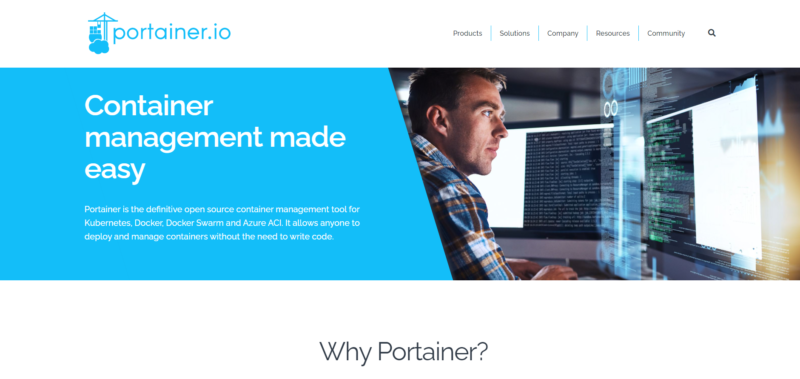
Portainer allows to easily manage Docker containers in a modern, easy-to-use online dashboard. The tool is primarily aimed at users who do not enjoy working on the command line and instead want to resort to a modern user interface.
All core Docker functions are available in the browser. Users can download container images, manage installed images, and much more. It’s also convenient: with the app templates on offer, popular open-source solutions, such as Apache and Nginx web servers, or MySQL and Mongo database systems can be started as containers with just a few clicks.
Rancher
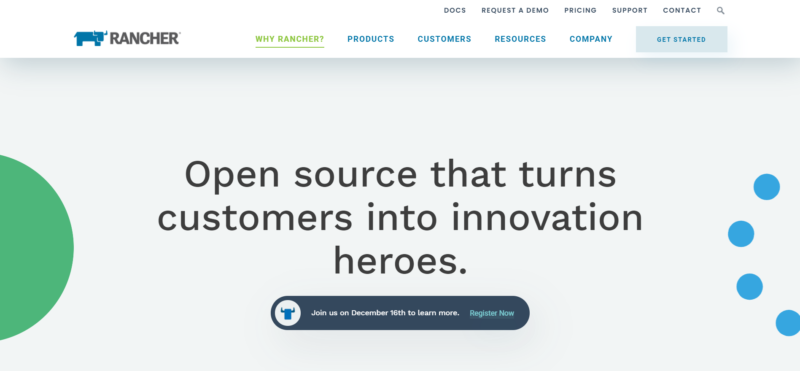
Rancher, developed in Silicon Valley, pursues a similar approach. But focuses on the Kubernetes container orchestration system. Rancher also features a simple web dashboard. Here, users can deploy and manage Kubernetes clusters across multiple clouds (Amazon Web Services, Azure, etc.).
After the creation of a new “environment”, Rancher guides the user step by step through the entire installation and configuration process. Once up and running, server environments can be conveniently managed and automatically scaled in the online dashboard.
Continuous Delivery for Everyone
With the triumph of Docker, Kubernetes, and Co., CD / CI solutions have become easy and accessible. This way, even small startups that could update their servers and applications manually without much effort benefit from them. Continuous Delivery brings together a number of techniques and tools that fully automate the delivery of software applications. And enable system seamless updates.
On the other hand, automated release creation allows to efficiently import applications into development, test, and production environments. Automating the test and delivery processes also enable software teams to deliver updates quickly, reliably, and repeatably with little risk. Popular CD / CI tools such as Jenkins, Travis CI, or Beanstalk have been around for about ten years.
However, lately, they have had to deal with stiff competition. The major code collaboration platforms GitHub, Bitbucket, and GitLab already have extensive CD / CI capabilities. And they seamlessly integrate into code repositories.
BitBucket Pipelines
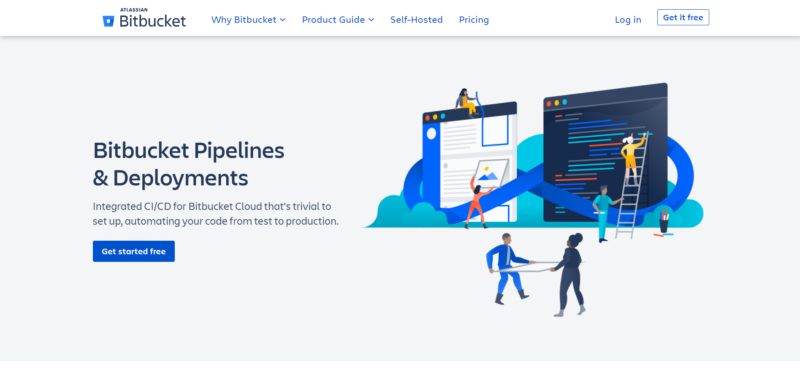
BitBucket already introduced a Docker-based feature in 2016 with “Pipelines”. It aims to drastically simplify the issue of continuous delivery and integration. Pipelines is primarily for smaller teams who want to implement modern deployment approaches around “Infrastructure as Code”. But are overwhelmed with classic IT automation solutions like Puppet, Ansible, and Chef.
BitBucket Pipelines supports developers with the entire deployment process. This can be automated using so-called “CI / CD pipelines”. A pipeline is a predefined provisioning process that can consist of multiple steps. The user can precisely define what actions will be carried out, in what order, and how errors should be handled if necessary.
In this case, developers still have full control over their deployments. Build settings are saved and managed in a single configuration file (YAML) in the code repository. All the commands and steps required to deploy the repository code in production are defined here. For example, Java developers must specify how the code will be compiled before deploying it to the server.
GitLab CI
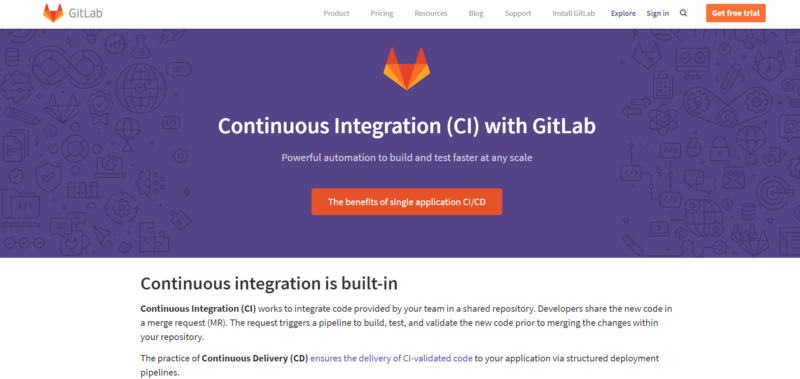
Another provider that was one of the first to make CI attractive to a wide audience is GitLab. With code hosting, version control, issue tracking, project management, code reviews, and more, the system originally developed in the Netherlands covers all the core aspects of efficient collaboration between software teams.
However, GitLab makes the difference with seamless integration of modern DevOps tools for everything that has to do with CD / CI in development work. From idea and first prototype to the automated deployment of updates in production. Coders and sysadmins can work together centrally on a single platform throughout the development process.
GitLab is based on open-source software, and offered in the freemium model. As is the case with BitBucket, GitLab customers can decide for themselves whether they want to install the solution locally or use it in the cloud. For about a year now, GitHub has also been offering a similar CI service with a similar set of features. And it’s free for public repositories.
Buddy
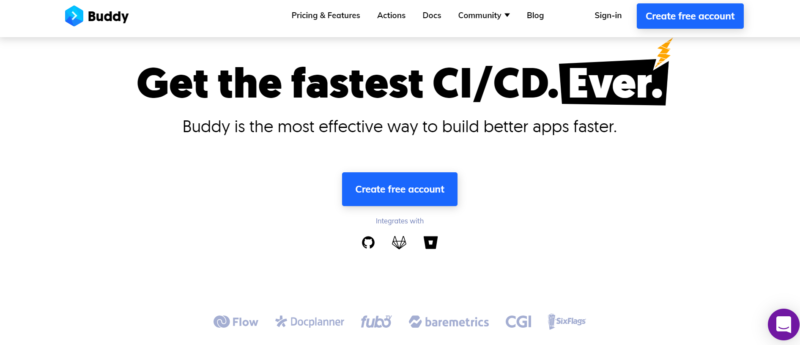
Buddy offers a lesser-known, but still, interesting alternative. And market leaders do not intimidate it, on the contrary. The cloud service, launched in Poland in 2015, covers all aspects of a continuous delivery process. And is particularly easy and intuitive to use.
It is convenient when configuring the pipelines. Buddy provides a wide range of predefined scripts, for example, to bring source files from the code repository to the production server via SFTP or to execute certain command line commands via SSH. As soon as the user has defined their pipelines with associated “Actions”, they just need to specify when and how the deployment process should start.
Developers basically have three options to choose from, each of which makes sense for different applications. They can start a deployment by simply pressing a button. Or automatically with each new push to a predefined branch of the code repository. Or at certain time intervals or certain times using a cron job.
As soon as the user has defined their pipelines with associated “Actions”, they just need to specify when and how the deployment process should start.
Buddy enables developers to precisely track all steps of the deployment process in the online dashboard. And then it sends automatic notifications to team members via email, Slack, etc.
Finally, Buddy scores with seamless integration options for popular cloud services. In addition to GitLab, GitHub, and BitBucket, it includes the leading cloud platforms from Amazon, Google, and Microsoft. One feature that you won’t find in most competing products like DeployBot or CircleCI is the ability to integrate serverless computing services like AWS Lambda, Azure Functions, and Google Cloud Functions into the deployment process.
More Flexibility with Serverless Computing
Serverless computing makes the dream of many backend developers come true. Developing software without having to worry about servers and infrastructure. The highlight: the server layer is completely abstracted. Of course, the code continues to run in the background on a specific application server. But as a developer, they never actually come into contact with it.
With AWS Lambda, Amazon launched the very first serverless computing solution. With Azure Functions and Cloud Functions, Microsoft and Google respectively introduced their own serverless services shortly thereafter.
Serverless computing makes the dream of many backend developers come true. Developing software without having to worry about servers and infrastructure.
Lambda and Co. automatically execute code on a highly available data processing infrastructure. And handle the entire management of data processing resources, including server and operating system maintenance, capacity provisioning, and automatic scaling. As well as the provision of code and security patches.
Developers can conveniently create their functions in a web dashboard. And set them up to be triggered automatically from other cloud services, or from any web, desktop, or mobile app. This makes the provision of complex software systems more flexible. As each serverless function can be updated in isolation, without having to update the rest of the system as well. Companies new to serverless can enlist the help of a serverless consulting agency to architect solutions, handle implementation complexities, and provide ongoing management.
Companies that rely on serverless computing can turn to helpful services that make it easier to work with Lambda and Co. For example, Stackery is a comprehensive all-in-one solution for designing, deploying, and operating serverless applications that work on the basis of Lambda. Dashbird is also worth mentioning. It is a professional monitoring tool specially designed for serverless computing. Users can monitor the performance of their serverless environments at any time and to analyze and correct errors and bottlenecks.
Why Are Deployment Tools a Must?
If you want to assert yourself in today’s highly competitive software market, you must be, above all, one thing: fast. You need to fix bugs quickly, launch new features quickly, and react to market changes quickly. If the most successful software startups, think of Stripe, Intercom, Asana, Twilio, or Zoom, for example, have one thing in common, then it’s a tremendous pace of innovation. Weekly and even daily updates have long become standard in this high-end area.
Such release cycles are only possible if you rely on modern, flexible cloud hosting technologies. And the right software tools to automate build, test, and deployment processes. Automating software deployments is now much easier than many people think. The many products that we have presented in this post demonstrate this. With their powerful but at the same time simple tools, and a well thought out user experience. Not only the big unicorns can benefit from this. But also startups and SMBs, which until now have mostly provided their software manually.
Continuous release cycles are only possible if you rely on modern, flexible cloud hosting technologies and the right software tools to automate build, test, and deployment processes.
The powerful yet simple deployment tools are aimed at any kind of companies, from big unicorns to startups and SMBs.